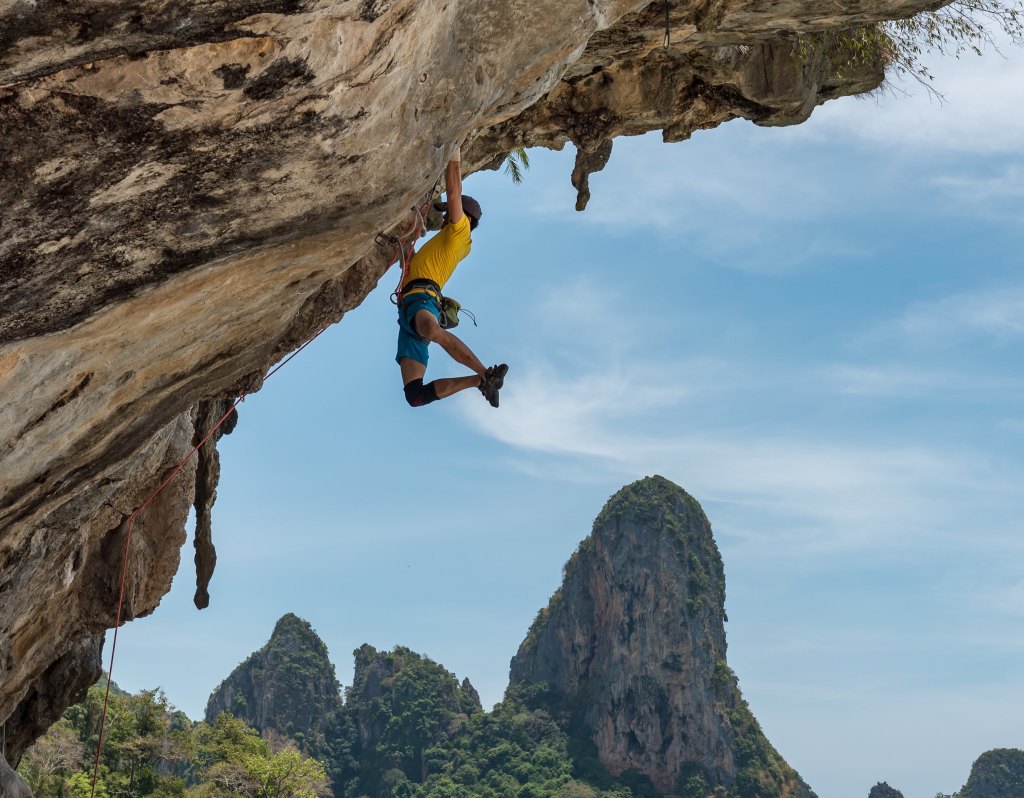
Ajahn Amaro
[Excerpts from: “The Place of Nonabiding”, a chapter in the book: “Small Boat, Great Mountain”]
“Who” and “What” Do Not Apply
In order to discover the place of nonabiding, we have to find a way of letting go of the conditioned, the world of becoming. We need to recognise the strong identification we have with our bodies and personalities, with all of our credentials, and with how we take it all as inarguable truth: “I am Joe Schmoe; I was born in this place; this is my age; this is what I do for a living; this is who I am.”
It seems so reasonable to think like this, and on one level, it makes total sense. But when we identify with those concepts, there is no freedom. There’s no space for awareness. But then, when we recognise how seriously and absolutely we take this identity, we open ourselves to the possibility of freedom. We taste the sense of self and feel how gritty that is and how real it seems to be. In recognising the feeling of it, we are able to know, “This is just a feeling.” The feelings of I-ness and my-ness are as transparent as any other feelings.
When the mind is calm and steady, I like to ask myself, “Who is watching?” or “Who is aware?” or “Who is knowing this?” I also like asking, “What is knowing?” “What is aware?” “What is practicing non-meditation?” The whole point of posing questions like these is not to find answers. In fact, if you get a verbal answer, it is the wrong one. The point of asking “who” or “what” questions is to puncture our standard presumptions. In the spaciousness of the mind, the words “who” and “what” start sounding ridiculous. There is no real “who” or “what.” There is only the quality of knowing. And, as we work with this in a more and more refined way, we see that feeling of personhood become more and more transparent; its solidity falls away, and the heart is able to open and settle back further and further. Vipassanā and Dzogchen practices are trying to outline very clearly for us how we are constantly making solid that which is inherently not solid. These methods are trying to illuminate the subtler and subtler kinds of clinging that we create around the feelings of self, time, identity, and location.
By framing our world in these ways, we are unconsciously concretising it. Questions like “Who are you?” automatically imply the reality of personhood. Answering with one’s name is a reasonable answer on the relative level. But the trouble comes in when we blindly allow the relative to slide into the absolute. We believe this name is a real thing. “I am a real person; I am Amaro.” Similarly, when we ask, “What day is it?” that question automatically implies the reality of time. If we’re not mindful, we go from acknowledging a human convention—brought about by the passage of our planet around the sun, somewhere in the “middle of this particular galaxy—to creating an absolute, universal truth.
The corollary to this non-creation of solidity in the realm of perceptions and conventions—just in case we’re afraid of losing all forms of reality—is that we don’t have to create or somehow obtain the Dharma to replace the familiar basis we are losing. When we stop creating the obscurations, the Dharma is always here.
As soon as we see where the subtle and coarse forms of clinging are happening, and that stranglehold loosens—when we remind ourselves, “There it is; there’s that grip, the contraction of identity”—there’s an openness and spaciousness. That freedom of heart comes from recognising how we habitually create things and then accept them as real. When that is truly seen and known, the clenching contractedness can’t sustain itself and the Dharma manifests instead.
“When” Does Not Apply
Time is another area in which we should notice subtle clinging. We may experience resting in awareness and have an attendant sense of clarity and spaciousness, but we may also have a firm sensation that this is happening now. When we do, without noticing it, we have turned that now-ness into a solid quality.
The process of letting go happens layer by layer. As one layer falls away, we can get all excited and think, “Oh, great. I’m free now. This open space is wonderful.” But then we start to realize, “Something isn’t quite right here. There is still some stickiness in the system.” We notice the solidification of time and the limitation we have created of the present.
There’s a verse about time by the Sixth Zen Patriarch that I love to quote. It says:
In this moment there is nothing which comes to be.
In this moment there is nothing which ceases to be.
Thus, in this moment, there is no birth and death to be brought to an end.
Thus, the absolute peace is this present moment.
Although it is just this moment, there is no limit to this moment,
And herein is eternal delight.

Birth and death depend on time. Something apparently born in the past, living now, will die in the future. Once we let go of time, and if we also let go of thing-ness, we see there can be no “real “thing” coming into being or dying; there is just the suchness of the present. In this way, there is no birth or death to be brought to an end.
That’s how this moment is absolutely peaceful; it is outside of time, akāliko.
We use such phrases as “this moment,” but they are not quite accurate because they still can give us an impression of the present as a small fragment of time. For even though it is just a moment, the present is limitless. In letting go of the structures of the past and future, we realize that this present is an infinite ocean, and the result of this realisation is living in the eternal, the timeless. We needn’t solidify and conceive the present in contradistinction to a past or future—it is its own self-sustaining vastness
We’re talking here about the abandonment of clinging at a very subtle level, a practice that takes a lot of quick and careful spiritual footwork. When we see our mind getting caught up with something, we can apply the classic vipassanā technique— just hit it with impermanence, not-self, and suffering, the old one, two, three. If we have a good sense of anattā, we chop it with a “not me, not mine” and down it goes. But it is important to remember that clinging is extraordinarily wiley. There we are gloating over our success, but we don’t realize that this is a tag match that’s going on. Another character is bearing down on us from behind while we look at our knockout on the floor. The partner is about to clobber us. We just barely let go of the attachment to time when attachment to opinions starts moving full speed ahead. We drop that, then here-ness takes over. Then it’s the body. . . . Clinging takes shape in many, many different ways and we need to notice them all.
Oil and Water
Up until the point when Ajahn Chah met his teacher Ajahn Mun, he said he never really understood that mind and its objects existed as separate qualities, and that, because of getting the two confused and tangled up, he could never find peace. But what he had got from Ajahn Mun—in the three short days he spent with him—was the clear sense that there is the knowing mind, the poo roo, the one who knows, and then there are the objects of knowing. These are like a mirror and the images that are reflected in it. The mirror is utterly unembellished and uncorrupted by either the beauty or the ugliness of the objects appearing in it. The mirror doesn’t even get bored. Even when there is nothing reflected in it, it is utterly equanimous, serene. This was a key insight for Ajahn Chah, and it became a major theme for his practice and teaching from that time onward.
He would compare the mind and its objects to oil and water contained in the same bottle. The knowing mind is like the oil, and the sense impressions are like the water. Primarily because our minds and lives are very busy and turbulent, the oil and water get shaken up together. It thus appears that the knowing mind and its objects are all one substance. But if we let the system calm down, then the oil and the water separate out; they are essentially immiscible.
There’s the awareness, the Buddha-mind, and the impressions of thought, the sensory world, and all other patterns of consciousness. The two naturally separate out from each other; we don’t have to do a thing to make it happen. Intrinsically they are not mixed. They will separate themselves out if we let them.
At this point, we can truly see that the mind is one thing and the mind-objects are another. We can see the true nature of mind, mind-essence, which knows experience and in which all of life happens; and we can see that that transcendent quality is devoid of relationship to individuality, space, time, and movement. All of the objects of the world—its people, our routines and mind states—appear and disappear within that space.
“Breathing and Walking
The effort to make a clear distinction between the mind that knows and mind-objects is thus very important to our practice. Mindfulness of breathing is a good way to work with this insight. Just notice the feeling of the breath as you follow the sensation of it. The breath is moving, but that which knows the breath is not moving.

Continued next week: Jan/18/2024
Source: https://www.abhayagiri.org/media/books/amaro_small_boat_great_mountain.pdf




You must be logged in to post a comment.